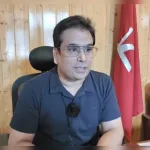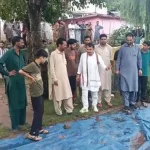Festivals, the world over are larger than life celebrations occurring at regular intervals reminding us to break free from the mundane and weave a tapestry of colour, spontaneity and vibrancy in our beings without which the humans won’t be able to sow and reap their USPs in terms of distinct identity, ability and their belief in the metaphysical existence of theirs. This meta physicality often translated into forces that are supernatural or subject to explanation according to natural laws are often mirrored via these festivals. Festivals are the carriers of peace and joy in the communities and the nation at large.
India with the gamut of races, cultures, languages & beliefs seldom seen across the world is the crucible of human interactions leading to an equally astounding range of celebrations that simply defy human understanding and logic. Seldom passes a month in India that doesn’t witness a spontaneity of celebrations hallmarked by the region and its people who go to any lengths to mark the festivity with their signature stamp of enthusiasm. Can the frontier areas of our northernmost state Himachal Pradesh, be far behind in such festivities? The answer is obviously a big ‘NO’. It is no brainer that the frontier districts of Himachal Pradesh i.e. Lahaul & Spiti as well as Kinnaur which abut the Tibetan autonomous region have a spillover of the effects of culture, religion, and such like issues with that area and vice versa.
No wonder the festivals of these two frontier districts have an unmistakable stamp of Tibetan culture in all its hues. Many of these festivals of Lahaul & Spiti as well as Kinnaur have the typical essence that has been reflected in the ‘animistic culture’ of Bon religion , one of the oldest practicing religions of the world that lays stress on worshipping of natural elements and objects like the sun, moon and the stars. The festival of ‘Phagli’ derived from the word ‘Phagun’ the Hindi calendar month signifying and corresponding to February/ March in the Gregorian calendar is in itself so encompassing that it needs no further introduction as to its importance.
As famous quote from ‘Emily climbs’ says –quote’ For spring is just around the corner and I have forgotten everything but gladness’ unquote. Be that as it may, I would be failing in my present endeavour if I don’t throw much light on this particular month and the peculiarity with which it is rung in the form of evergreen festival of ‘Phagli’ in the frontier areas of Himachal Pradesh. This fair is a typical ‘mask festival’ celebrating the victory of the God over the demon, as also marks the return of spring and the expulsion of winter demons. The practice of donning the masks has probably its origins in the Bon culture of early Tibetans who wore these masks representing the animistic figures of the planet.
I have had the unique opportunity to witness this ‘Phagli’ festival at ‘Pooh’ in district Kinnaur way back in Feb 1997 while posted at Rupa valley of Kinnaur while serving with the SFF (Special frontier force). But then here ends the difference in the way celebrations are rung in both districts of Lahaul & Spiti as well as Kinnaur. Both the celebrations though central in theme have some USPs that set them apart in these frontier districts.
In Lahaul & Spiti district this festival is celebrated over a period of about 7 days unlike in Kinnaur which is wrapped up in mere 3 days flat. Lahaul & Spiti people collect snow in their snow baskets and pile it on their roofs to create a symbolic Shivling with families worshipping Lord Shiva. The masses prepare local dishes like ‘Totu’ and ‘Marchu’ and offer them to their local deities. Being more bent on regarding animistic religion as their sine quo non the locals pay respect to their cattle and acknowledge their dependence on them. It is also called as yellow festival by the people of this area who adorn their houses with marigold flowers thus setting the tone for change of seasons.
Legend has it that this Phagli festival is associated with Raja Bali a great benevolent ruler of the area. It is said that Lord Vishnu descended to earth incarnated in the form of ‘Vaman’ (human being) to ameliorate the sufferings of the Devtas ( Gods) who all were defeated by demon king Bali . In one of the interactions with the demon king , Lord Vishnu (Vaman) asked three yards of land from the demon king for his abode. The demon king high on his victories over the Gods granted the wish to Lord Vishnu least realizing that he was confronting the maker of the universe itself.
Lord Vishnu came into his original self and in two strides measured the entire earth and heaven with the third stride yet to be fulfilled. That’s when the demon king offered his own head for the third stride of the lord. Lord Vishnu was so enamored with the benevolence of the demon king that he granted him the position of supreme king of earth forever. In Lahaul district this festival is also known by the name of Kuhan, Losar or Jukharu. Moreover the locals of the area used to be virtually under house arrest due to heavy snowfall during the winter months and used to consider these winter months as demons praying continuously with their local deities to help them overcome these winter demons.
Of particular interest to the readers of this article would be the unique Phagli festival being celebrated in one of the oldest villages of Himachal Pradesh at ‘Malana’ in Kullu district located on an isolated plateau in the Malana nala valley , bordering the Parvati valley to the NE of the Kullu valley. Locals of Malana state that Jamul rishi inhabited this area dictating the rules of coexistence of the population so that the people believe that they are the descendants of the Aryan civilization. Women of this village act also in a traditional dance in the courtyard of Mata Ambika and Mata Renuka manifesting acts of devotion to the deity Jamlu Rishi.
Rituals related to Phagli festival are carried out by the participants wearing traditional clothes and instead of the ordinary shoes which are prohibited. They wear the ‘Khooba’, a shoe made of goat wool. The dance of the masks is characterized by the presence of three barefooted masked dancers, dressed in traditional clothes and with the body wrapped in branches and green leaves. As far as celebrating this festival in district Kinnaur is concerned , it takes a different trajectory in all the actions being performed by the locals of this frontier district bordering Tibet.
In Kinnaur, this festival though again having the same theme of ‘victory prevailing over evil’ is celebrated on the moonless night or ‘Amavasya’. Special dances like ‘Deo khel’ and ‘Raksh khel’ are performed by the people of Kinnaur to the rhythm of drum beats. Unlike the demon king Bali who was demonized for his actions by the Gods who beseeched Lord Vishnu to ameliorate them from the evils of Raja Bali, over here in Kinnaur the demons are represented by ‘Tundi Raksh’ who was done to death by Manu rishi with the help of Shandalya rishi. These variations in celebrations and also the proverbial ‘casus belli’ between the demon king and the Gods prove that regions in our country had myriad causes to celebrate a festival like Phagli , though the underlying theme remaining the same i.e changing seasons and beckoning of spring season thus giving respite to the people from a long wintery torture .
With the spring season just around the corner in India, which signifies a time of renewal, growth and joy; is it any wonder that people fed up of the gloom and doom of the winter months look forward to throw the yoke of restriction forced upon by the cold? Spring signifies reproduction, renewal and a surfeit of activities that were put on hold. In the similar vein the highlanders of the frontier districts of Himachal Pradesh too ring this festival in their own traditional way.
How much importance was bestowed upon this festival of Phagli can be gauged from this single fact that the royal family of Rampur Bushahr used to throw open its official palace the ‘Padam mahal’ to the commoners where the local deities represented by the locals in their traditional dresses were invited by the Rajmata aka the queen to partake into the festivities in the forecourt. Later on the Rajmata used to distribute blankets, bed sheets, and a sizable amount of cash to these locals. Though these traditions have now been diluted to a large extent under the onslaught of time and tide of modernity, but yet the former royals of Rampur Bushahar make it point to identify themselves with their subjects on such occasions. Since it these festivals which take a community forward and cement the relations between the ruler and the ruled and thus hyphenate them in their entirety.
(The writer is a retired army officer and a regular scribe of Rising Kashmir. He can be approached on his email at: [email protected])








